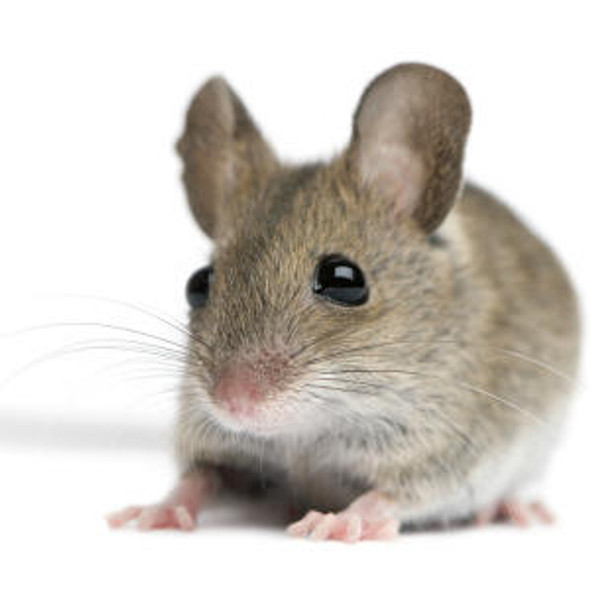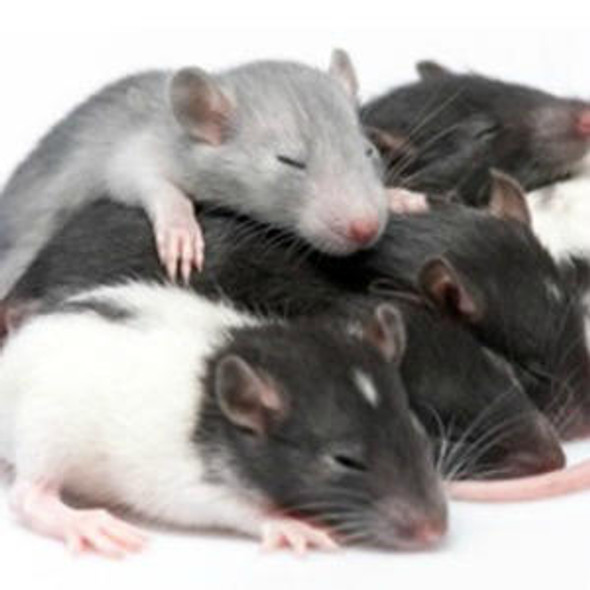Description
Human Neuronal acetylcholine receptor subunit alpha-4 (CHRNA4) ELISA Kit
The Human Neuronal Acetylcholine Receptor Subunit Alpha 4 (CHRNA4) ELISA Kit is a powerful tool for the quantitative measurement of CHRNA4 levels in human samples such as serum, plasma, and cell culture supernatants. This kit offers exceptional sensitivity and specificity, ensuring accurate and reproducible results for a variety of research applications.CHRNA4 is a key subunit of the neuronal acetylcholine receptor, essential for neurotransmission and playing a vital role in neuronal communication. Dysregulation of CHRNA4 has been implicated in various neurological disorders such as epilepsy and Alzheimer's disease, making it a valuable biomarker for studying these conditions and potential therapeutic targets.
With the Human Neuronal Acetylcholine Receptor Subunit Alpha 4 (CHRNA4) ELISA Kit, researchers can confidently investigate the role of CHRNA4 in neurobiology, drug development, and disease pathology, advancing our understanding of neurological disorders and paving the way for innovative treatment strategies.
| Product Name: | Human Neuronal acetylcholine receptor subunit alpha-4 (CHRNA4) ELISA Kit |
| SKU: | HUEB2032 |
| Size: | 96T |
| Target: | Human Neuronal acetylcholine receptor subunit alpha-4 (CHRNA4) |
| Synonyms: | NACRA4 |
| Assay Type: | Sandwich |
| Detection Method: | ELISA |
| Reactivity: | Human |
| Detection Range: | 78-5000pg/mL |
| Sensitivity: | 39.7pg/mL |
| Intra CV: | Provided with the Kit |
| Inter CV: | Provided with the Kit |
| Linearity: | Provided with the Kit |
| Recovery: | Provided with the Kit |
| Function: | After binding acetylcholine, the AChR responds by an extensive change in conformation that affects all subunits and leads to opening of an ion-conducting channel across the plasma membrane permeable to sodium ions. |
| Uniprot: | P43681 |
| Sample Type: | Serum, plasma, tissue homogenates, cell culture supernates and other biological fluids |
| Specificity: | Natural and recombinant human Neuronal acetylcholine receptor subunit alpha-4 |
| Sub Unit: | Neuronal AChR is composed of two different types of subunits: alpha and beta. Alpha-4 subunit can be combined to beta-2 or beta-4 to give rise to functional receptors, complexes with beta-2 may be heteropentamers (PubMed:22361591). Interacts with RIC3; which is required for proper folding and assembly (PubMed:16120769). Interacts with LYPD6 (PubMed:27344019). |
| Research Area: | Neurosciences |
| Subcellular Location: | Cell junction Synapse Postsynaptic cell membrane Multi-pass membrane protein Cell membrane Multi-pass membrane protein Cell membrane Lipid-anchor |
| Storage: | Please see kit components below for exact storage details |
| Note: | For research use only |
| UniProt Protein Function: | nAChRA4: a ligand-gated ion channels that binds acetylcholine and mediates fast signal transmission at synapses. After binding acetylcholine, these pentameric receptors undergo an extensive change in conformation that affects all subunits and leads to opening of an ion-conducting channel across the plasma membrane. An integral membrane receptor subunit that can interact with either nAChR beta-2 or nAChR beta-4 to form a functional receptor. |
| UniProt Protein Details: | Protein type:Membrane protein, integral; Membrane protein, multi-pass; Receptor, misc.; Channel, ligand-gated Chromosomal Location of Human Ortholog: 20q13.33 Cellular Component: cell soma; dendrite; external side of plasma membrane; membrane; nicotinic acetylcholine-gated receptor-channel complex; plasma membrane Molecular Function:acetylcholine binding; acetylcholine receptor activity; ligand-gated ion channel activity; nicotinic acetylcholine-activated cation-selective channel activity Biological Process: B cell activation; behavioral response to nicotine; calcium ion transport; cognition; DNA repair; membrane depolarization; neurological system process; neuromuscular synaptic transmission; regulation of action potential; regulation of dopamine secretion; regulation of inhibitory postsynaptic membrane potential; regulation of membrane potential; response to hypoxia; response to nicotine; response to oxidative stress; sensory perception of pain; signal transduction; synaptic transmission, cholinergic Disease: Epilepsy, Nocturnal Frontal Lobe, 1; Tobacco Addiction, Susceptibility To |
| NCBI Summary: | This gene encodes a nicotinic acetylcholine receptor, which belongs to a superfamily of ligand-gated ion channels that play a role in fast signal transmission at synapses. These pentameric receptors can bind acetylcholine, which causes an extensive change in conformation that leads to the opening of an ion-conducting channel across the plasma membrane. This protein is an integral membrane receptor subunit that can interact with either nAChR beta-2 or nAChR beta-4 to form a functional receptor. Mutations in this gene cause nocturnal frontal lobe epilepsy type 1. Polymorphisms in this gene that provide protection against nicotine addiction have been described. Alternative splicing results in multiple transcript variants. [provided by RefSeq, Feb 2012] |
| UniProt Code: | P43681 |
| NCBI GenInfo Identifier: | 1351848 |
| NCBI Gene ID: | 1137 |
| NCBI Accession: | P43681.2 |
| UniProt Secondary Accession: | P43681,Q4JGR7, Q4VAQ5, Q4VAQ6, |
| UniProt Related Accession: | P43681 |
| Molecular Weight: | 60,994 Da |
| NCBI Full Name: | Neuronal acetylcholine receptor subunit alpha-4 |
| NCBI Synonym Full Names: | cholinergic receptor nicotinic alpha 4 subunit |
| NCBI Official Symbol: | CHRNA4 |
| NCBI Official Synonym Symbols: | EBN; BFNC; EBN1; NACHR; NACRA4; NACHRA4 |
| NCBI Protein Information: | neuronal acetylcholine receptor subunit alpha-4 |
| UniProt Protein Name: | Neuronal acetylcholine receptor subunit alpha-4 |
| Protein Family: | Neuronal acetylcholine receptor |
| UniProt Gene Name: | CHRNA4 |
| UniProt Entry Name: | ACHA4_HUMAN |
| Component | Quantity (96 Assays) | Storage |
| ELISA Microplate (Dismountable) | 8×12 strips | -20°C |
| Lyophilized Standard | 2 | -20°C |
| Sample Diluent | 20ml | -20°C |
| Assay Diluent A | 10mL | -20°C |
| Assay Diluent B | 10mL | -20°C |
| Detection Reagent A | 120µL | -20°C |
| Detection Reagent B | 120µL | -20°C |
| Wash Buffer | 30mL | 4°C |
| Substrate | 10mL | 4°C |
| Stop Solution | 10mL | 4°C |
| Plate Sealer | 5 | - |
Other materials and equipment required:
- Microplate reader with 450 nm wavelength filter
- Multichannel Pipette, Pipette, microcentrifuge tubes and disposable pipette tips
- Incubator
- Deionized or distilled water
- Absorbent paper
- Buffer resevoir
*Note: The below protocol is a sample protocol. Protocols are specific to each batch/lot. For the correct instructions please follow the protocol included in your kit.
Allow all reagents to reach room temperature (Please do not dissolve the reagents at 37°C directly). All the reagents should be mixed thoroughly by gently swirling before pipetting. Avoid foaming. Keep appropriate numbers of strips for 1 experiment and remove extra strips from microtiter plate. Removed strips should be resealed and stored at -20°C until the kits expiry date. Prepare all reagents, working standards and samples as directed in the previous sections. Please predict the concentration before assaying. If values for these are not within the range of the standard curve, users must determine the optimal sample dilutions for their experiments. We recommend running all samples in duplicate.
| Step | |
| 1. | Add Sample: Add 100µL of Standard, Blank, or Sample per well. The blank well is added with Sample diluent. Solutions are added to the bottom of micro ELISA plate well, avoid inside wall touching and foaming as possible. Mix it gently. Cover the plate with sealer we provided. Incubate for 120 minutes at 37°C. |
| 2. | Remove the liquid from each well, don't wash. Add 100µL of Detection Reagent A working solution to each well. Cover with the Plate sealer. Gently tap the plate to ensure thorough mixing. Incubate for 1 hour at 37°C. Note: if Detection Reagent A appears cloudy warm to room temperature until solution is uniform. |
| 3. | Aspirate each well and wash, repeating the process three times. Wash by filling each well with Wash Buffer (approximately 400µL) (a squirt bottle, multi-channel pipette,manifold dispenser or automated washer are needed). Complete removal of liquid at each step is essential. After the last wash, completely remove remaining Wash Buffer by aspirating or decanting. Invert the plate and pat it against thick clean absorbent paper. |
| 4. | Add 100µL of Detection Reagent B working solution to each well. Cover with the Plate sealer. Incubate for 60 minutes at 37°C. |
| 5. | Repeat the wash process for five times as conducted in step 3. |
| 6. | Add 90µL of Substrate Solution to each well. Cover with a new Plate sealer and incubate for 10-20 minutes at 37°C. Protect the plate from light. The reaction time can be shortened or extended according to the actual color change, but this should not exceed more than 30 minutes. When apparent gradient appears in standard wells, user should terminatethe reaction. |
| 7. | Add 50µL of Stop Solution to each well. If color change does not appear uniform, gently tap the plate to ensure thorough mixing. |
| 8. | Determine the optical density (OD value) of each well at once, using a micro-plate reader set to 450 nm. User should open the micro-plate reader in advance, preheat the instrument, and set the testing parameters. |
| 9. | After experiment, store all reagents according to the specified storage temperature respectively until their expiry. |
When carrying out an ELISA assay it is important to prepare your samples in order to achieve the best possible results. Below we have a list of procedures for the preparation of samples for different sample types.
| Sample Type | Protocol |
| Serum | If using serum separator tubes, allow samples to clot for 30 minutes at room temperature. Centrifuge for 10 minutes at 1,000x g. Collect the serum fraction and assay promptly or aliquot and store the samples at -80°C. Avoid multiple freeze-thaw cycles. If serum separator tubes are not being used, allow samples to clot overnight at 2-8°C. Centrifuge for 10 minutes at 1,000x g. Remove serum and assay promptly or aliquot and store the samples at -80°C. Avoid multiple freeze-thaw cycles. |
| Plasma | Collect plasma using EDTA or heparin as an anticoagulant. Centrifuge samples at 4°C for 15 mins at 1000 × g within 30 mins of collection. Collect the plasma fraction and assay promptly or aliquot and store the samples at -80°C. Avoid multiple freeze-thaw cycles. Note: Over haemolysed samples are not suitable for use with this kit. |
| Urine & Cerebrospinal Fluid | Collect the urine (mid-stream) in a sterile container, centrifuge for 20 mins at 2000-3000 rpm. Remove supernatant and assay immediately. If any precipitation is detected, repeat the centrifugation step. A similar protocol can be used for cerebrospinal fluid. |
| Cell culture supernatant | Collect the cell culture media by pipette, followed by centrifugation at 4°C for 20 mins at 1500 rpm. Collect the clear supernatant and assay immediately. |
| Cell lysates | Solubilize cells in lysis buffer and allow to sit on ice for 30 minutes. Centrifuge tubes at 14,000 x g for 5 minutes to remove insoluble material. Aliquot the supernatant into a new tube and discard the remaining whole cell extract. Quantify total protein concentration using a total protein assay. Assay immediately or aliquot and store at ≤ -20 °C. |
| Tissue homogenates | The preparation of tissue homogenates will vary depending upon tissue type. Rinse tissue with 1X PBS to remove excess blood & homogenize in 20ml of 1X PBS (including protease inhibitors) and store overnight at ≤ -20°C. Two freeze-thaw cycles are required to break the cell membranes. To further disrupt the cell membranes you can sonicate the samples. Centrifuge homogenates for 5 mins at 5000xg. Remove the supernatant and assay immediately or aliquot and store at -20°C or -80°C. |
| Tissue lysates | Rinse tissue with PBS, cut into 1-2 mm pieces, and homogenize with a tissue homogenizer in PBS. Add an equal volume of RIPA buffer containing protease inhibitors and lyse tissues at room temperature for 30 minutes with gentle agitation. Centrifuge to remove debris. Quantify total protein concentration using a total protein assay. Assay immediately or aliquot and store at ≤ -20 °C. |
| Breast Milk | Collect milk samples and centrifuge at 10,000 x g for 60 min at 4°C. Aliquot the supernatant and assay. For long term use, store samples at -80°C. Minimize freeze/thaw cycles. |










